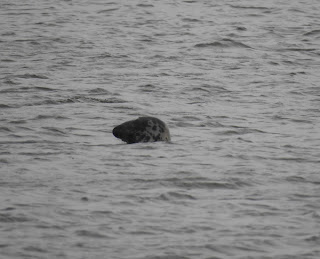NATURE MONCTON INFORMATION LINE, November
8, 2020 (Sunday)
To respond by e-mail, please address
your message to the information line editor, nelsonpoirier435@gmail.com .
Please advise the editor at nelsonpoirier435@gmail.com if any
errors are noted in wording or photo labelling.
For more information on Nature Moncton, check the website at www.naturemoncton.com .
Edited by: Nelson Poirier nelsonpoirier435@gmail.com
Transcript by: Louise Nichols nicholsl@eastlink.ca
Info Line # 506-384-6397 (384-NEWS)
**
Phil Riebel had his trail cam set up at their Renous woodlot property
all summer and recently picked it up to be surprised and pleased to have 6
photos of a LYNX. Note the long legs and
large foot pads that characterize a Lynx over the spaniel-like posture of a
Bobcat. The tip of the tail does not
completely show, but it would be black top and bottom.
** It is so great to be talking PINE GROSBEAKS [Durbec des
sapins] and EVENING
GROSBEAKS [Gros-bec errant] almost
everyday recently. Clarence Cormier had
some Pine Grosbeaks come to a Highbush Cranberry shrub on his Grande-Digue
site. Highbush Cranberry is often a
berry of last resort, but not for Pine Grosbeaks as they are only interested in
the seeds of the less tasty pulp.
** Doreen Rossiter comments that she
was starting to feel left out, not having any EVENING GROSBEAKS [Gros-bec
errant]. However, she was rewarded for the wait with a
flock of 50 arriving to her Alma yard on Saturday. AMERICAN GOLDFINCH [Chardonneret
jaune] also rose
from 15-20 to 50+. Doreen was also
surprised when a bright male HOUSE FINCH [Roselin familier] visited on Saturday, the first one she has had
visit in a very long time.
** I made an error in yesterday’s
edition calling a MANITOBA MAPLE [Érable negundo] a White Ash tree. It is corrected on the BlogSpot, but I felt
it warranted more comment. Gart Bishop
was the first to point out the suspected error, but Doug Hiltz from the
Maritime College of Forest Technology cleared up some confusion. Doug has allowed me to paraphrase his remarks
below which is a lesson for anyone interested in trees.
Doug Hiltz: I can indeed comment on the identification of the tree and also offer an
opinion on why it appears the way it does. The tree is in fact a female
Manitoba Maple. The curved, rounded shape of the samara confirms that. White Ash
seeds are more symmetrical and straight. Also they are even more pointed at the
end that attaches to the tree. Now, the
following is just my guess/opinion as to the presence of so many seeds so late
in the year. This is not exactly my area of expertise, but I believe it is a
combination of factors. Though Manitoba Maple will often retain many seeds into
the winter (a favourite with birds) the amount on this tree does seem
excessive. It probably began with our relatively warm spring. Most years
Manitoba Maple produces many more flowers than will ever develop into seeds,
with frost killing a good portion of them. Warm springs hence led to very heavy
seed years. Then, we had a hot dry summer which probably led to many of the
seeds not being viable and that could cause them not be released from the tree.
Then, we have had a fairly warm autumn thus far which would further delay the
release of seeds. All this would lead to the very heavy levels of seeds we see
retained on the tree. As for the form of the tree, Manitoba Maple can have a
widely varied crown shape, especially in urban environments. Also, the bark of
mature Manitoba Maples can look remarkably similar to White Ash.
It should also be pointed out that Manitoba Maple can have both seed and pollen flowers on the same tree or can be totally female or male. Doug commented that they are usually diecious, meaning male and female flower on different trees. The sheer number of samara on the photograph strongly suggest it to be female. After seeing and learning more about Manitoba Maple, I wish the ones on my street and in my yard were as female as the one photographed to produce all this bird food instead of seeming more intent on making the area a Manitoba Maple forest!
** Stella and Jean-Paul Leblanc visited
Cap-Lumiere wharf area on Friday. The
last visit they noticed 30 GREY SEALS [Phoque gris] in the area, but on Friday,
only one was popping up to get photographed from two angles to show the Grey
Seal’s long forehead. They also
photographed a RED-THROATED LOON [Plongeon catmarin] as well as getting a very pleasant
portrait of a BONAPARTE'S GULL [Mouette de Bonaparte] and SNOW BUNTING [Bruant des neiges].
** Another NORTHERN CARDINAL
[Cardinal rouge] and more EVENING
GROSBEAKS [Gros-bec errant].
Bob Blake is having a female Cardinal visit his Second North River
feeder yard, as well as several Evening Grosbeaks.
** Aldo Dorio photographed the more
conservatively-dressed female EVENING GROSBEAK [Gros-bec errant] at Tabusintac.
He also photographed a WHITE-THROATED SPARROW [Bruant à gorge blanche] that is showing remnant markings on the
breast/chest area to suggest a young-of-the-year bird.
** The Saint John Naturalist Club
produces a periodic newsletter. It is
very rewarding to connect with other groups to hear how and what they are doing
during this period of Covid-19 restrictions to try to keep everyone as safe as
possible, but not put our naturalists interests aside and keep groups viable
until the scenario is wrestled down. The
Saint John Naturalist Club Newsletter can be viewed at the link below. They advise that numbers have to be limited
to some events to meet Covid guidelines, but want to assure that anyone is
welcome to join their planned events if possible. See link below:
Nelson Poirier,
Nature Moncton









